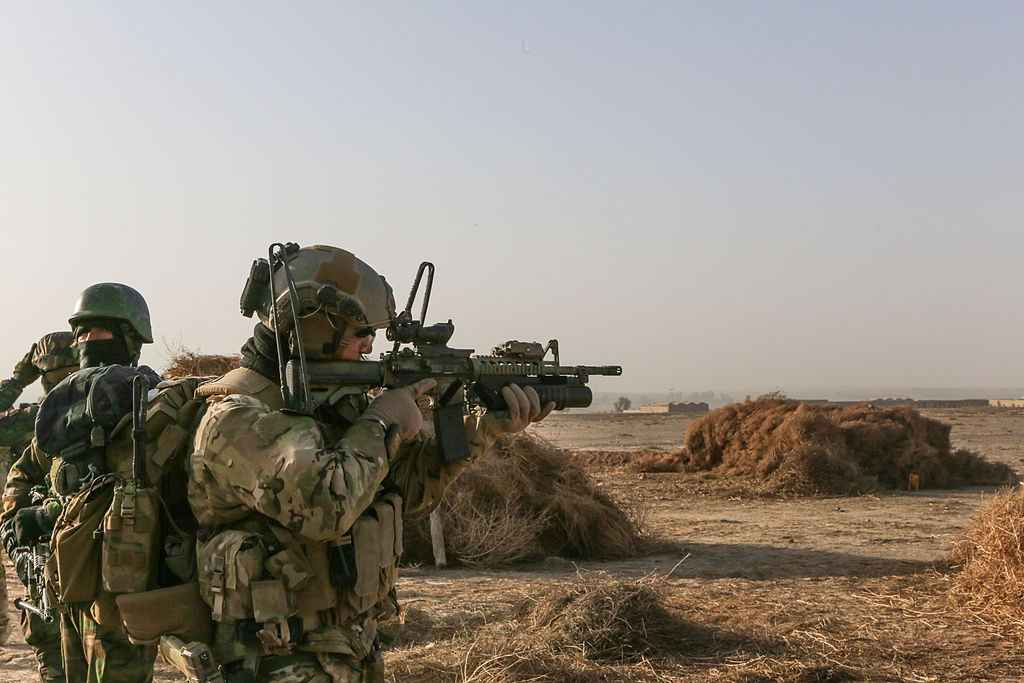The Year in Review: Counterterrorism
U.S. national security suffered in 2017. Russia is running amok, allies are losing faith in American security and prosperity commitments, and the liberal order is in crisis. Surrounding these clouds, however, a silver lining stands out: counterterrorism. U.S. counterterrorism proved successful this year, especially against jihadist movements that have plagued the United States and the world since 9/11.

Published by The Lawfare Institute
in Cooperation With

U.S. national security suffered in 2017. Russia is running amok, allies are losing faith in American security and prosperity commitments, and the liberal order is in crisis. Surrounding these clouds, however, a silver lining stands out: counterterrorism. U.S. counterterrorism proved successful this year, especially against jihadist movements that have plagued the United States and the world since 9/11. Jihadist terrorism still poses a problem, of course, and other forms of terrorism have risen too in intensity, but a look at the terrorism balance sheet for 2017 shows a net positive. Yet, the U.S. disengagement from the Middle East provides fertile soil for terrorist groups to grow. Long-term counterterrorism success requires a reexamination of U.S. policy in the Middle East at large.
The collapse of the Islamic State’s caliphate in Iraq and Syria represents the biggest counterterrorism success. The Islamic State will go underground and otherwise try to adapt, but losing their territory dealt a big blow: only three years ago, the group seemed deeply rooted in Iraq and Syria and was metastasizing in Egypt, Libya and other countries in the Muslim world. In addition to the U.S. assault on the Islamic State’s territory, the group’s virtual presence is under siege due to counterterrorism efforts, with both the quality and quantity of its propaganda suffering. Even with the collapse of the Islamic State’s caliphate, so-called “homegrown violent extremists” (HVEs) will likely attack, the group will strive to restore itself in Iraq and Syria, and frustrated, would-be foreign fighters may also strike. Some of the Islamic State’s thousands of foreign fighters will also return home, posing an additional danger. Regardless, the collapse of the caliphate dealt a big blow to Islamic State.
Setting aside the fall of the caliphate, the counterterrorism picture looks positive from the perspective of U.S. homeland security. In 2017, nine people died on U.S. soil from jihadist terrorist attacks (a security guard killed in Denver, two Americans and six foreign tourists, killed during the car-ramming attack in New York City). That’s nine too many but it should not obscure that the overall number is low. This low number probably stems from a mix of strong U.S. counterterrorism measures abroad, aggressive investigations and better defenses at home, and the overall weakness of jihadist networks in the United States.
Europe remains worse off than America, but here too the picture may be brightening. In 2015, jihadists killed 150 people in Europe and 135 died in 2016 . As 2017 winds to a close, however, that figure fell to less than 60. Europe is even more threatened than America by returning foreign fighters and HVEs, but it too has improved counterterrorism practices, and the decline of the Islamic State, which had previously inspired over thousands of Europeans to travel and fight with the group since the Syrian civil war broke out in 2011, also bodes well for Europe in the long-term.
Al-Qaeda too has taken hits. In particular, al-Qaeda recently suffered a major loss when its Syrian affiliate, Hay’at Tahrir al Sham (HTS, or Organization for the Liberation of the Levant and formerly known as Jabhat al-Nusra), split from the al-Qaeda core in an acrimonious divorce. As Syria remains the most important theater of jihad, the al-Qaeda core’s setback– and HTS’ apparent determination to focus on the Syrian theater rather than the global targets that al-Qaeda favors – hinders its ability to threaten the west and raises questions about its overall relevance under Ayman al-Zawahiri’s leadership.
The Islamic State’s or other related groups’ leadership did not train and direct the more recent attacks in Europe and the United States. Often in these cases, the perpetrator acted in the Islamic State’s name or worked virtually with an Islamic State coordinator who encouraged them and gave limited direction. Bottom-up versus top-down may seem like an unnecessary distinction if violence continues but, with many caveats, more dangerous attacks tend to result from terrorists directed by a group’s leadership. These terrorists are usually more likely to succeed in their attack, more lethal when they do, and less likely to hit targets of ancillary value. For example, a sympathizer carried out the New York City vehicle attack in 2017--a terrorist success the Islamic State was pleased to claim. Yet this attack killed more foreign tourists than Americans, reducing its propaganda value as a strike against the “forces of Satan.”
Despite all this good news, many problems remain. Vehicle ramming attacks are happening with increasing frequency and this lethal and relatively easy tactic will likely become a standard component of the terrorist repertoire. In addition, the speed and scale of Islamic State recruitment in the 2013 to 2015 period, especially in Europe, suggests a large body of potential radicals and a great appeal of many jihadist ideas – on which the next big terrorist group may capitalize. Furthermore, the networks previously formed for Islamic State mobilization will likely be revived and grow during the next jihadist iteration.
Right-wing violence, always incurring a high body count, grabbed a greater share of the spotlight in 2017. Right-wing violence in the United States and Europe often feeds into a broader political debate involving the acceptance of immigrants, refugees and minority groups. This mix of violence and demonization can not only lead to a back-and-forth cycle of radicalization (as extremes react to each other) but might also scare ordinary people, making them more distrusting of their neighbors or their governments. Politicians exploit this fear and exacerbate the problem. President Trump’s exclusive focus on jihadist terrorism and temporizing over right-wing violence set a near-perfect example of how not to handle a domestic terrorism problem. The President’s near-silence on right-wing violence appears to legitimate it and heartens extreme but non-violent right-wing groups that often act as feeders for violence.
Last, but certainly not least, the Middle East remains in flames. The biggest weakness of President Obama’s counterterrorism strategy was that it often tried to divorce fighting terrorism from broader regional policies: the administration fought the Islamic State in Syria and Libya, for example, but it did little to try to dampen or even shape the civil wars there. Today civil wars rage in Afghanistan, Iraq, Libya, Syria and Yemen, with Egypt and Pakistan also in crisis – and this pool swells further when countries on the brink are also considered. Unfortunately, the Trump administration appears more likely to withdraw from the region or even incite regional rivals than try to end these destructive civil wars. This is devastating for the region while also providing fertile ground for radical groups to develop and prosper.
To continue the counterterrorism success of 2017, policymakers should focus on Middle East civil wars, the rise of right-wing violence, and emerging techniques like vehicle ramming attacks. However, even as we prepare for the problems that lie ahead, it’s worth quietly celebrating the important victories of 2017.





